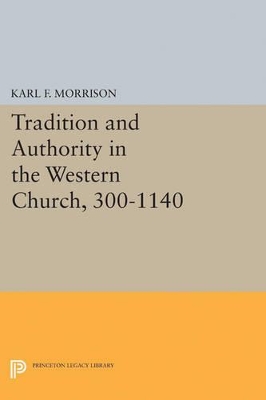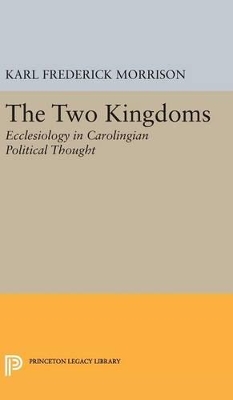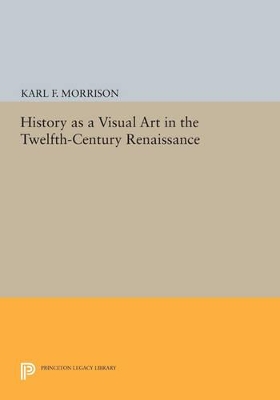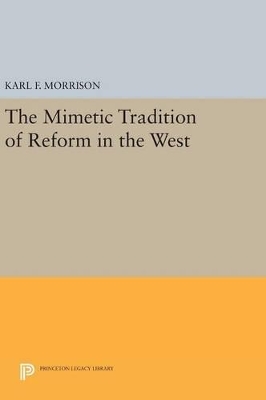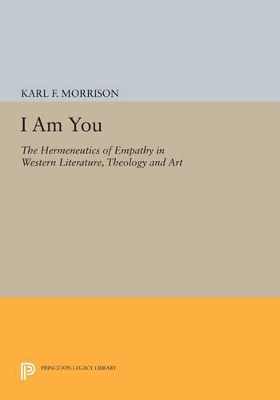Princeton Legacy Library
5 total works
Tradition and Authority in the Western Church, 300-1140
by Karl F. Morrison
Published 21 November 1969
Beginning with the conversion of Constantine in 312 and the establishment of the Christian Empire, the book continues through the Middle Ages up to the publication of Gratian's Decretum, the great, systematic book of Church law which transformed the idea of tradition into legal concepts. Throughout this period the hierarchy was called upon to deal with such fundamental questions as the nature of tradition and the extent of its authority, the infallibility of the pope, and the proper role of the laity in defining dogma. Originally published in 1969. The Princeton Legacy Library uses the latest print-on-demand technology to again make available previously out-of-print books from the distinguished backlist of Princeton University Press. These editions preserve the original texts of these important books while presenting them in durable paperback and hardcover editions. The goal of the Princeton Legacy Library is to vastly increase access to the rich scholarly heritage found in the thousands of books published by Princeton University Press since its founding in 1905.
The Two Kingdoms treats a major achievement of the Carolingian "Renaissance," Frankish ecclesiology, and the influence of 9th-century ecclesiology upon contemporary political thought. Dr. Morrison focuses particularly on the argument that, in this world, government was divided between the earthly kingdom and the kingdom of the Church. Originally published in 1964. The Princeton Legacy Library uses the latest print-on-demand technology to again make available previously out-of-print books from the distinguished backlist of Princeton University Press. These editions preserve the original texts of these important books while presenting them in durable paperback and hardcover editions. The goal of the Princeton Legacy Library is to vastly increase access to the rich scholarly heritage found in the thousands of books published by Princeton University Press since its founding in 1905.
History as a Visual Art in the Twelfth-Century Renaissance
by Karl F. Morrison
Published 8 October 1990
Karl Morrison discusses historical writing at a turning point in European culture: the so-called Renaissance of the twelfth century. Why do texts considered at that time to be masterpieces seem now to be fragmentary and full of contradictions? Morrison maintains that the answer comes from ideas about art. Viewing histories as artifacts made according to the same aesthetic principles as paintings and theater, he shows that twelfth-century authors and audiences found unity not in what the reason read in a text but in what the imagination read into it: they prized visual over verbal imagination and employed a circular, or nuclear, spectator-centered perspective cast aside in the Renaissance of the fourteenth and fifteenth centuries. Twelfth-century writers assimilated and transformed a tradition of the conceptual unity of all the arts and attributed that unity to the fact that art both conceals and discloses. Recovering that tradition, especially the methods and motives of concealment, provides extraordinary insights into twelfth-century ideas about the kingdom of God, the status of women, and the nature of time itself.
It also identifies a strain in European thought that had striking affinities to methods of perception familiar in Oriental religions and that proved to be antithetic to later humanist traditions in the West. Originally published in 1990. The Princeton Legacy Library uses the latest print-on-demand technology to again make available previously out-of-print books from the distinguished backlist of Princeton University Press. These editions preserve the original texts of these important books while presenting them in durable paperback and hardcover editions. The goal of the Princeton Legacy Library is to vastly increase access to the rich scholarly heritage found in the thousands of books published by Princeton University Press since its founding in 1905.
It also identifies a strain in European thought that had striking affinities to methods of perception familiar in Oriental religions and that proved to be antithetic to later humanist traditions in the West. Originally published in 1990. The Princeton Legacy Library uses the latest print-on-demand technology to again make available previously out-of-print books from the distinguished backlist of Princeton University Press. These editions preserve the original texts of these important books while presenting them in durable paperback and hardcover editions. The goal of the Princeton Legacy Library is to vastly increase access to the rich scholarly heritage found in the thousands of books published by Princeton University Press since its founding in 1905.
Ancient writers distinguished between art and style, arguing that free imitation was a critical strategy that freed artists from servile copying of objects and blind submission to rules of style. In this study Karl F. Morrison explores the far-reaching consequences of this distinction Originally published in 1982. The Princeton Legacy Library uses the latest print-on-demand technology to again make available previously out-of-print books from the distinguished backlist of Princeton University Press. These editions preserve the original texts of these important books while presenting them in durable paperback and hardcover editions. The goal of the Princeton Legacy Library is to vastly increase access to the rich scholarly heritage found in the thousands of books published by Princeton University Press since its founding in 1905.
Important trends in contemporary intellectual life celebrate difference, divisiveness, and distinction. Speculative writing increasingly highlights "hermeneutic gaps" between human beings, their histories, and their hopes. In this book Karl Morrison identifies an alternative to this disruption. He explores for the first time the entire legacy of thought revolving around the challenging claim "I am you"--perhaps the most concise possible statement of bonding through empathy. Professor Morrison shows that the hope for thoroughgoing understanding and inclusion in another's world view is central to the West's moral/intellectual tradition. He maintains that the West may yet escape the fatal flaw of casting that hope in paradigms of sexual and aesthetic dominance--examples of empathetic participation inspired by hunger for power, as well as by love. The author uses diverse sources: in theology ranging from Augustine to Schleiermacher, in art from the religious art of the Christian Empire to post-Abstractionism, and in literature from Donne to Joyce, Pirandello, and Mann.
In this work he builds on the thought of two earlier books: Tradition and Authority in the Western Church: 300-1140 (Princeton, 1969) and The Mimetic Tradition of Reform in the West (Princeton, 1982). "I Am You" goes beyond their themes to the inward act that, according to tradition, consummated the change achieved by mimesis: namely, empathetic participation. Originally published in 1988. The Princeton Legacy Library uses the latest print-on-demand technology to again make available previously out-of-print books from the distinguished backlist of Princeton University Press. These editions preserve the original texts of these important books while presenting them in durable paperback and hardcover editions. The goal of the Princeton Legacy Library is to vastly increase access to the rich scholarly heritage found in the thousands of books published by Princeton University Press since its founding in 1905.
In this work he builds on the thought of two earlier books: Tradition and Authority in the Western Church: 300-1140 (Princeton, 1969) and The Mimetic Tradition of Reform in the West (Princeton, 1982). "I Am You" goes beyond their themes to the inward act that, according to tradition, consummated the change achieved by mimesis: namely, empathetic participation. Originally published in 1988. The Princeton Legacy Library uses the latest print-on-demand technology to again make available previously out-of-print books from the distinguished backlist of Princeton University Press. These editions preserve the original texts of these important books while presenting them in durable paperback and hardcover editions. The goal of the Princeton Legacy Library is to vastly increase access to the rich scholarly heritage found in the thousands of books published by Princeton University Press since its founding in 1905.
